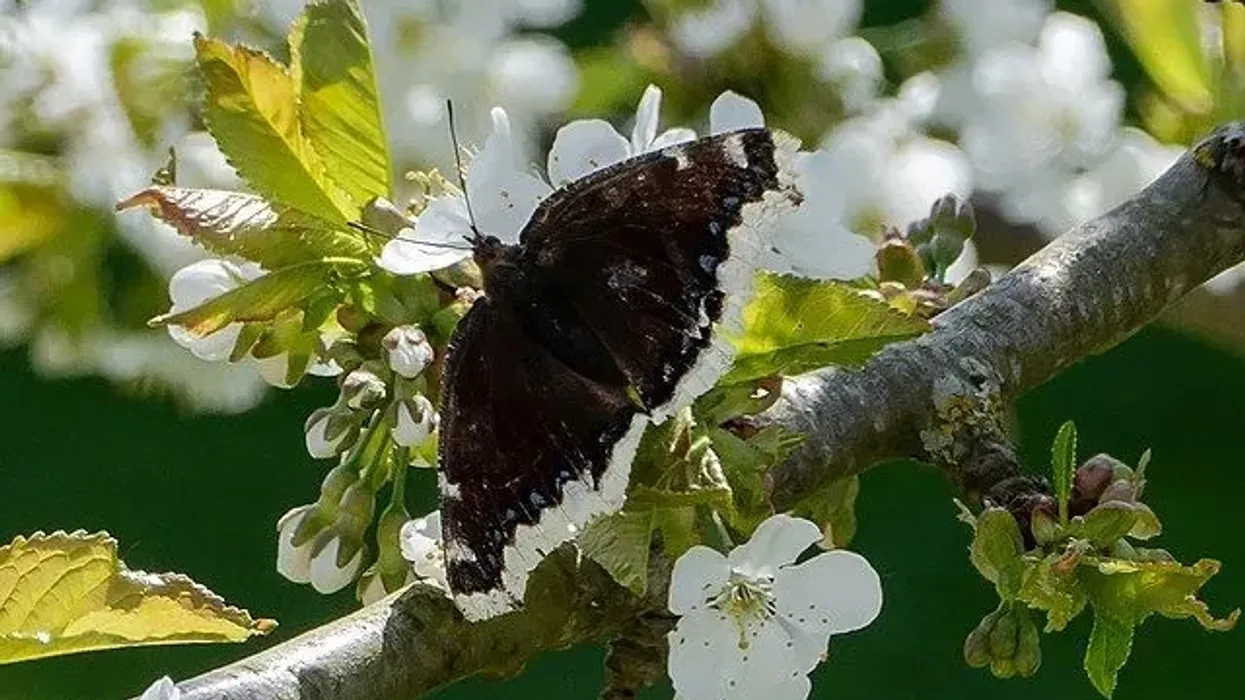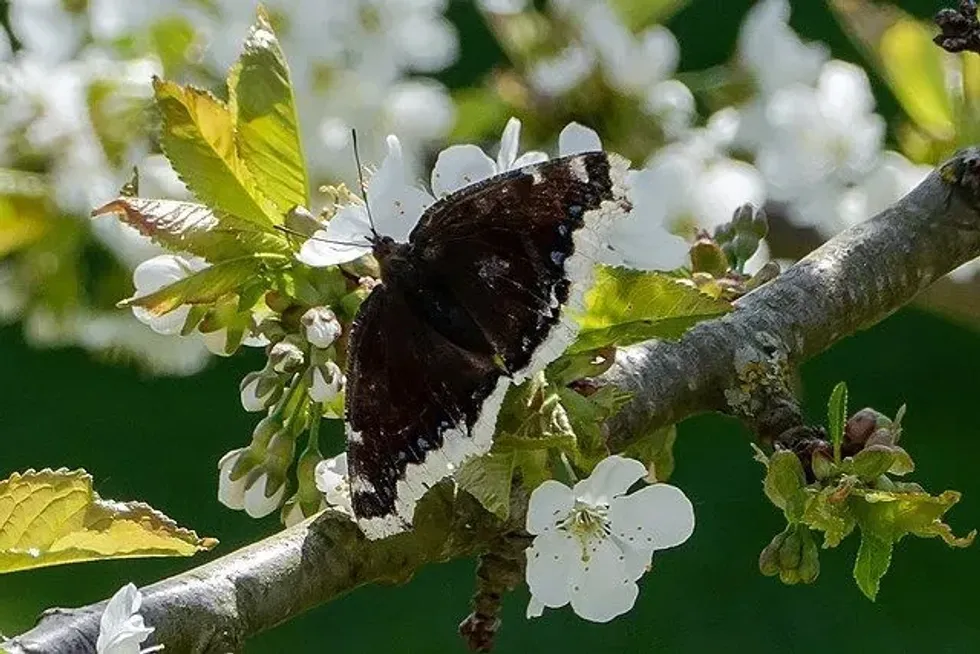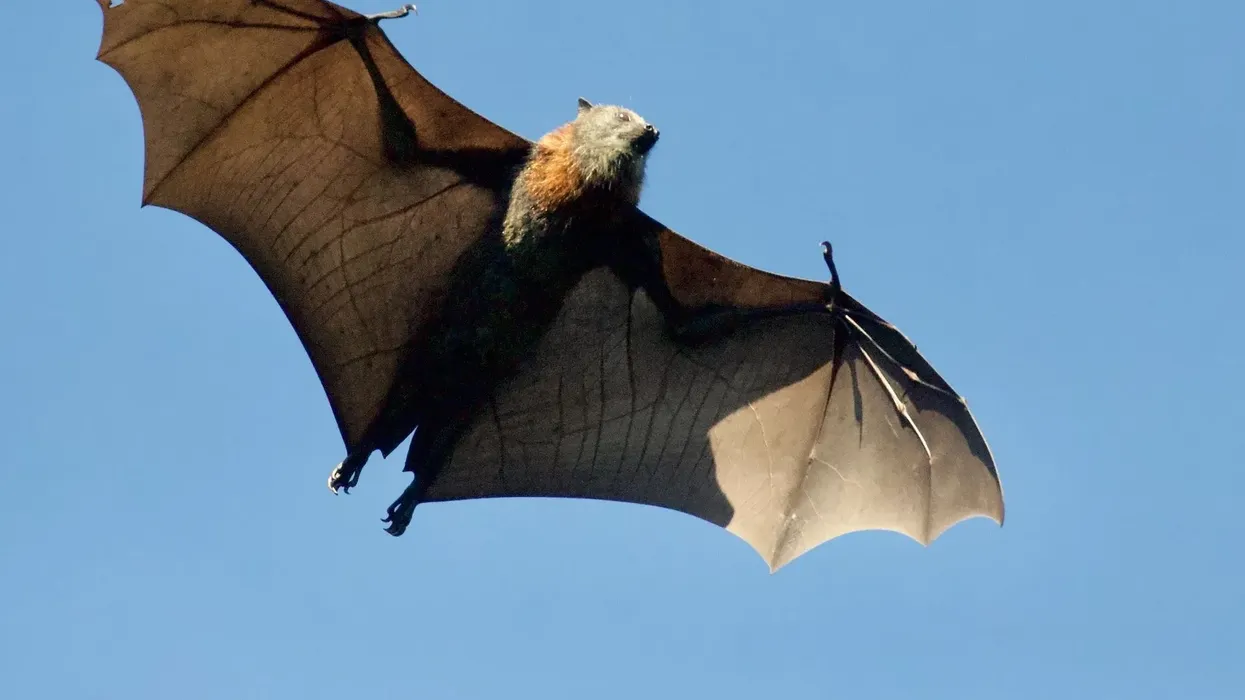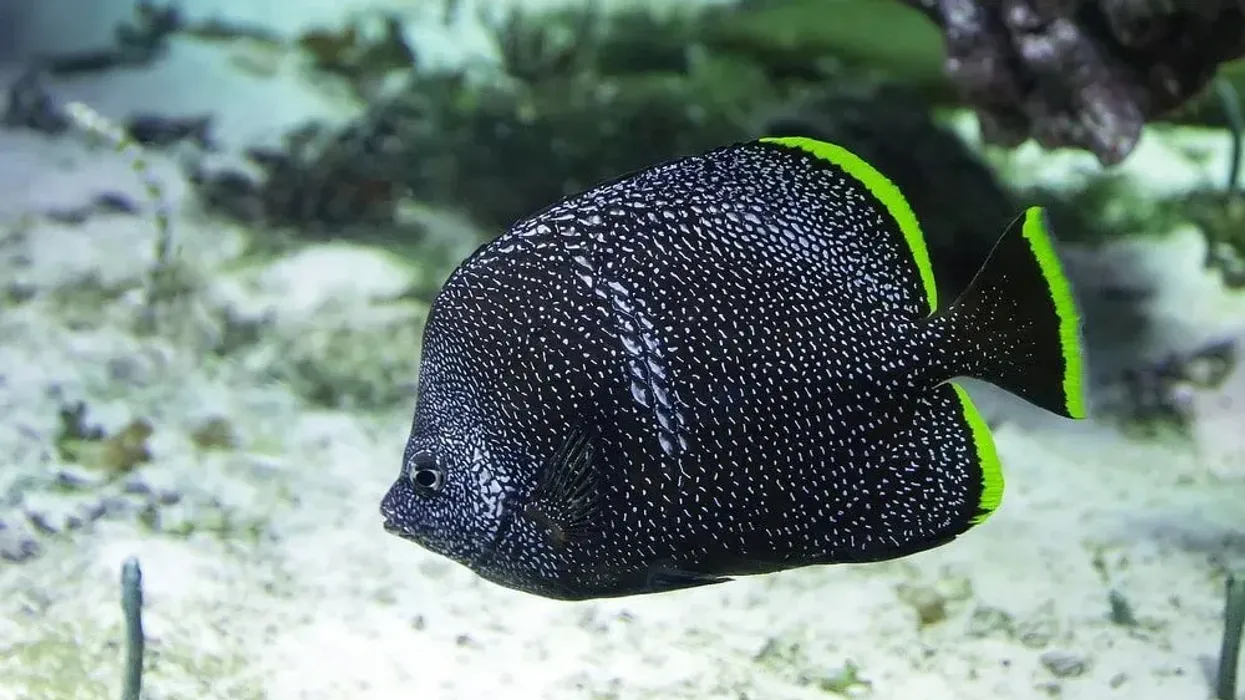The mourning cloak butterfly (Nymphalis antiopa) is a species of large butterfly found throughout the Northern Hemisphere, especially in North America and Europe. The mourning cloak is actually its North American name, in Britain, this species is known as a Camberwell beauty.
It is a very common butterfly that is seen often in its native range. The mourning cloak butterfly caterpillar is referred to as the spiny elm caterpillar for preferring elm as its host plant. The mourning cloak butterfly's scientific name is Nymphalis antiopa.
They are frequently observed basking in the sun, eating sap on warm winter days but are most active during the spring season. It is not surprising to see them as one of the first butterflies of the season.
Therefore the common name, Harbinger of Spring does justice to the adults. When they sit with an open wing, the dorsal part of the large and sturdy wings looks very beautiful.
However, they appear highly cryptic while resting with a closed wing. To know more facts about these butterflies, keep on reading these facts.
For similar content check out our viceroy butterfly facts and painted lady butterfly facts.
Mourning Cloak Butterfly Interesting Facts
What type of animal is a mourning cloak butterfly?
The mourning cloak (Nymphalis antiopa) butterfly is a type of large and fast-flying butterfly native to North America and Eurasia.
What class of animal does a mourning cloak butterfly belong to?
The mourning cloak butterfly (Nymphalis antiopa), of the Lepidoptera order and Nymphalidae family, belongs to the class Insecta, the common class for all insects.
How many mourning cloak butterflies are there in the world?
The global population of the mourning cloak has not been determined as of yet. There is little information regarding the total population and population trend but since the species is widespread and they occur over a large range, the population size is assumed to be stable.
However, in some parts of the mourning cloak butterfly range, local population declines have been documented. In North America, up to 67% of population decline is recorded over a span of ten years in Florida.
Another study in Ohio indicated a decline of 34% of the population between 1996-2016. In Europe, the overall population trend of these butterflies is determined to be stable.
However, regional declines in distribution have been recorded in some countries in Europe.
The population size of these insects has decreased from Belgium, France, Switzerland, Germany, Turkey, and Slovakia. In contrast to this scenario, there are some places in Europe where the population of the cloak butterflies has shown an increasing trend like Spain and Finland.
This phenomenon neutralized the effects of population decline and results in an overall stable trend. However, thorough monitoring of the populations over the entire range is required before drawing any conclusion about the butterfly's population status.
Where does a mourning cloak butterfly live?
They are distributed throughout the northern hemisphere in large numbers. The mourning cloak butterfly location in America is marked by the tundra line in Alaska and Canada.
The southern range extends from the borders of Canada and Alaska up to central and south Mexico. Further south, some individuals might also be found in the northern parts of South America but remain absent from subtropical regions.
Therefore, they do not occur in southern states like Texas, Louisiana, and Florida. Some of them migrate to Great Britain during the non-breeding season but returns to their original habitat before the onset of the wet winters in Britain.
What is a mourning cloak butterfly's habitat?
The mourning cloak (Nymphalis antiopa) prefers to live in open habitats where they can get enough sunshine. The species are found predominantly in mountainous areas and occasionally in temperate regions.
They perch near watercourses in parks, gardens, open woods, forest edges, or canyons. Even though they have a preference for perching on higher objects, these butterflies are presumably absent from elevated hilltops.
Who do mourning cloak butterflies live with?
An adult mourning cloak flies around singly rather than in groups. Therefore the adults are considered to be typically solitary animals. However, their larvae live by forming clusters before their first instar. As they develop into a caterpillar, the clusters become non-existent.
How long does a mourning cloak butterfly live?
The mourning cloaks (Nymphalis antiopa) is one the longest living butterflies in North America, even longer than the monarch butterfly. The lifespan of the adults ranges between 10-11 months but the larval stage lasts for three to four weeks.
How do they reproduce?
The breeding season of the mourning cloak butterflies commences with the onset of the spring season, it lasts from April to June. The female butterflies search for a host plant at the start of the breeding season to lay eggs.
The mourning cloak butterfly host plant provides food for the caterpillars in their larval stage. So the selection process is very vital. The males are polygamous in nature, they breed with multiple females throughout their entire life.
It is a highly territorial species, the males lek together over large areas and defend the area from other competing males. Lekking, a communal breeding display, is observed in territories that act as female hotspots.
This increases the probability of every male finding a female for itself. The females have multiple broods ranging up to two to three broods.
Like all other Lepidoptera species, the mourning cloak butterfly life cycle also includes four stages of metamorphosis. They are eggs, larvae, pupae, and adults.
The larvae live by forming groups in their host plants until they shed their skin. The large shed their skin four times in their developmental process. After the fifth or sixth instar, they completely transform into caterpillars.
The caterpillars morph into pupae in the next stage of development where the larvae remain enclosed in a cocoon. After a span of approximately 15 days, the mourning cloak larvae finally emerge as complete adults from the cocoon.
What is their conservation status?
The mourning cloaks (Nymphalis antiopa) are classified as a species of Least Concern in the IUCN Red List. They have an extremely large range and are fairly widespread throughout the entire range.
They do not face any substantial threat in their natural habitat which has led to the growth in their numbers. However, an infestation of their natural habitats caused by modified agricultural lands has driven the population down in some places.
The effects of agricultural infestation are prominent in Florida and Ohio. The absence of any conservation method for the butterflies has resulted in a declining population in some parts of their distribution.
Mourning Cloak Butterfly Fun Facts
What do mourning cloak butterflies look like?

The mourning cloak butterfly (Nymphalis antiopa) is a large butterfly consisting of scalloped wings. The wings are dark maroon in color and are bordered by a creamy-yellow margin on the sides. The interior part of the margin in each wing is lined by blue spots.
In some individuals, the blue spots of the wings might be absent. The ventral side of the wings is gray-black giving it a perfectly camouflaged appearance when it sits with the folded wing. The margins are bordered by pale yellow like the dorsal part.
How cute are they?
The mourning cloak has beautiful iridescent wings that make them look attractive and cute.
How do they communicate?
Butterflies generally communicate by releasing chemical cues.
How big is a mourning cloak butterfly?
The length of a mourning cloak is unknown however their wingspan ranges between 3-3.5 in (7.6-8.9 cm), similar to the queen butterflies.
How fast can a mourning cloak butterfly fly?
Mourning cloaks are known to be fast fliers but their speed has not been determined.
How much does a mourning cloak butterfly weigh?
The weight of the mourning cloak butterflies has not been determined.
What are the male and female names of the species?
The adult males and females of the species do not have any sex-specific names. Both of them are known as mourning cloak butterflies.
What would you call a baby mourning cloak butterfly?
A butterfly in its larval stage is referred to as a caterpillar.
The adult mourning cloaks feed on nectar and tree sap. They are also attracted to rotting fruit.
Are they friendly?
Yes, they are friendly.
Would they make a good pet?
They are not poisonous therefore they would make good pets.
Did you know...
The name 'mourning cloak' comes from the mourning cloak butterfly meaning and the mourning cloak butterfly symbolism. Their body represents a mourning cloak that is worn by people who mourn the death of a loved one.
What does a mourning cloak butterfly do in winter?
The mourning cloak butterfly's winter is one without any activity. The butterflies hibernate during the entire winter and re-emerge as the winter gradually starts to fade away and spring sets in. They hibernate inside tree cavities or in areas on the ground enclosed with tree barks during the winter.
What type of trees do mourning cloak butterflies prefer?
The mourning cloak butterfly prefers to live and feed primarily on deciduous trees. The adult lays eggs on trees like elm, willow, poplar, birch, aspen, and hackberry.
The caterpillars of the species also live and feed on elm, poplar, willow, and hackberry leaves. They eat leaves very fast therefore it is better to treat the plant containing the larvae as soon as possible. As it transforms into an adult, it prefers to feed on the tree sap and nectar of flowers from these plants.
Here at Kidadl, we have carefully created lots of interesting family-friendly animal facts for everyone to discover! For more relatable content, check out these woolly bear facts and red admiral butterfly facts for kids.
You can even occupy yourself at home by coloring in one of our free printable black swallowtail butterfly coloring pages.









